The Adventure Begins!
Goodbye Fairbanks, Alaska
Fairbanks is an incredible place and I met some AMAZING people. Saying goodbye was hard. But, let's admit it, the real adventure begins next summer. So what is that all about?
Hello Svalbard
Svalbard is an archipelago (island group) in the Arctic Ocean constituting the northernmost part of Norway. It is halfway between Norway and the North Pole. Looking at the globe below, you can see it is WAY up there! Notice too that it is completely inside the Arctic Circle, meaning in summer it receives 24 hours of sunlight. During my time there the sun will NEVER set!
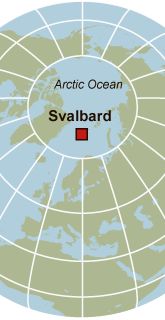 Svalbard is an archipelago halfway between Norway and the North Pole. Image credit: NYTimes.com
Svalbard is an archipelago halfway between Norway and the North Pole. Image credit: NYTimes.com
Ny-Alesund
Svalbard supports a population of about 2,700 residents, most of them living in the largest town, Longyearbyen. The three major industries are coal mining, tourism and research. I will be going to the world's northernmost settlement, a small research station called Ny-Alesund. In the summer, about 120 scientists from all over the world converge on Ny-Alesund which is located on a fjord (a long water inlet with steep cliffs created by glacial erosion) called Kongsfjorden.
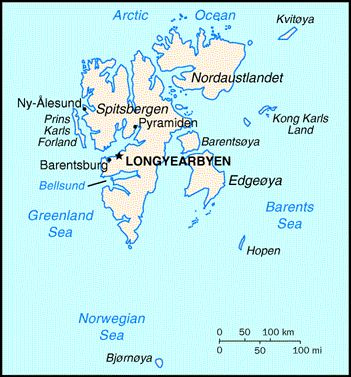 Svalbard has a population of about 2,700 residents. Longyearbyen is home to 2,000. Ny-Alesund can swell to 120 people in the summer when scientists come to work. Image Credit: About.com Geography
Svalbard has a population of about 2,700 residents. Longyearbyen is home to 2,000. Ny-Alesund can swell to 120 people in the summer when scientists come to work. Image Credit: About.com Geography
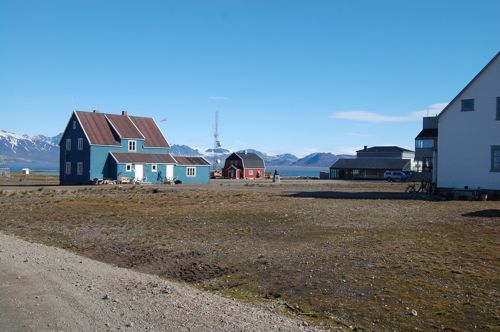 Ny-Alesund on a sunny day. The blue building is the German station. Photo Credit: Mark Goldner
Ny-Alesund on a sunny day. The blue building is the German station. Photo Credit: Mark Goldner
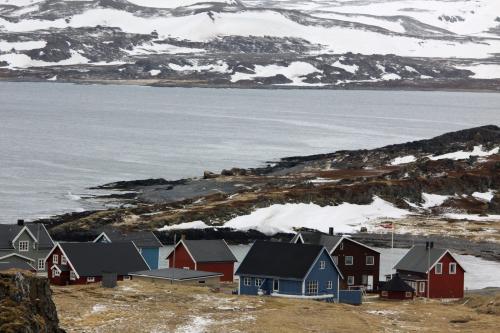 The team will be working around the local fjord- Kongsfjorden. Photo Credit: Chris Lansdell
The team will be working around the local fjord- Kongsfjorden. Photo Credit: Chris Lansdell
Research Experience for Undergraduates
I will be part of a nine person team involved in a program called Research Experience for Undergraduates. Six undergraduate geoscience students from different universities will be selected to participate. They will each have a different research focus and collect data that they will eventually present as a senior thesis. The team will be headed by Dr. Ross Powell from Northern Illinois University and Dr. Julie Brigham-Grette from University of Massachusetts, Amherst. I am really looking forward to the dynamics of being around such a young group! When I was an undergraduate, I also participated in an experience like this aboard an oceanographic research vessel off the coast of Indonesia. Our focus was bathymetry- we used sonar to map the seafloor. We did this both from the ship and small boats that we spent all day on while charting the shallow water areas. It hasn't escaped my notice that these students will be the same age as my youngest son, Jon. Ha!
 The project will be led by Dr. Ross Powel, Northern Illinois University and Dr. Julie Brigham-Grette, University of Massachusetts, Amherst. Photo Credit: Mark Goldner
The project will be led by Dr. Ross Powel, Northern Illinois University and Dr. Julie Brigham-Grette, University of Massachusetts, Amherst. Photo Credit: Mark Goldner
WOW!
As you can see below, the scenery in Ny-Alesund is absolutely stunning. This will be my workplace for three weeks! Our goal while we are there is to research how high latitude glaciers, melt-water streams and sedimentation in the fjords reflect climate. One of my jobs will be to drive a small boat with the students to different places on the fjord so they can deploy their instruments and collect data. We will approach the calving front of the glacier and observe and maneuver around icebergs in the fjord. Am I nervous? A little, but I've been told that I can pick up this "boat driving skill" pretty easily. I have some experience with small boats, so I think I'll be okay.
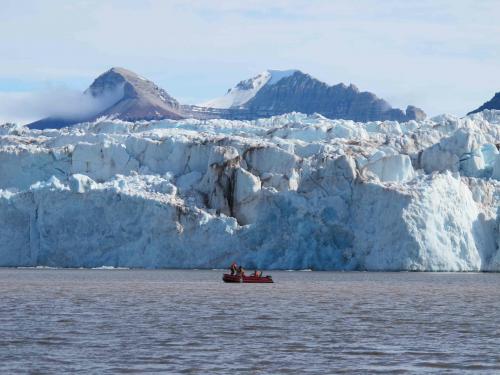 Understanding climate change in tidewater environments of the high arctic Photo credit: Dr. Julie Brigham-Grette
Understanding climate change in tidewater environments of the high arctic Photo credit: Dr. Julie Brigham-Grette
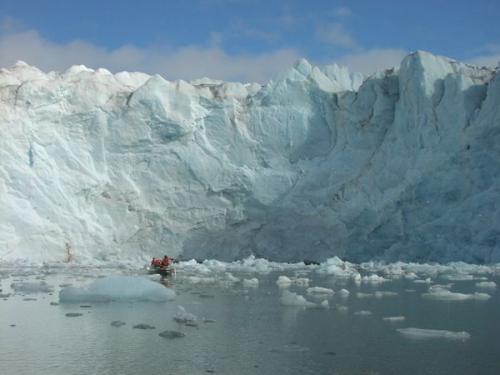 Near the 80 m high calving front of the glacier in Kongsfjorden. Photo Credit: Dr. Julie Brigham-Grette
Near the 80 m high calving front of the glacier in Kongsfjorden. Photo Credit: Dr. Julie Brigham-Grette
Polar Bears
Svalbard is home to a breeding population of polar bears. Some 3,000 bears occupy the sea ice in the Barents Sea around Svalbard and Franz Joseph Land to the east. They may come to Svalbard to mate, build a den for raising cubs or to look for food as the sea ice diminishes. If any of us venture outside of the immediate area of the science station we must be armed with a rifle for protection against the polar bears. I'm really hoping to see a polar bear....from a distance!!
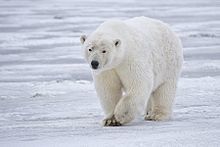 The Barents Sea and area surrounding Svalbard is home to about 3,000 polar bears. Svalbard is an important polar bear breeding ground.
The Barents Sea and area surrounding Svalbard is home to about 3,000 polar bears. Svalbard is an important polar bear breeding ground.
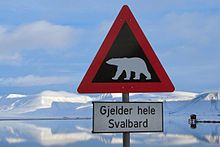 A road sign on Svalbard, warning about the presence of polar bears.
A road sign on Svalbard, warning about the presence of polar bears.
Join me!
So please come join me, because this adventure is all about you! By staying connected via journals, comments and Polar Connect events, YOU will be the scientist. Ask questions, be curious and follow the science. I can't wait to take you all along!


Comments